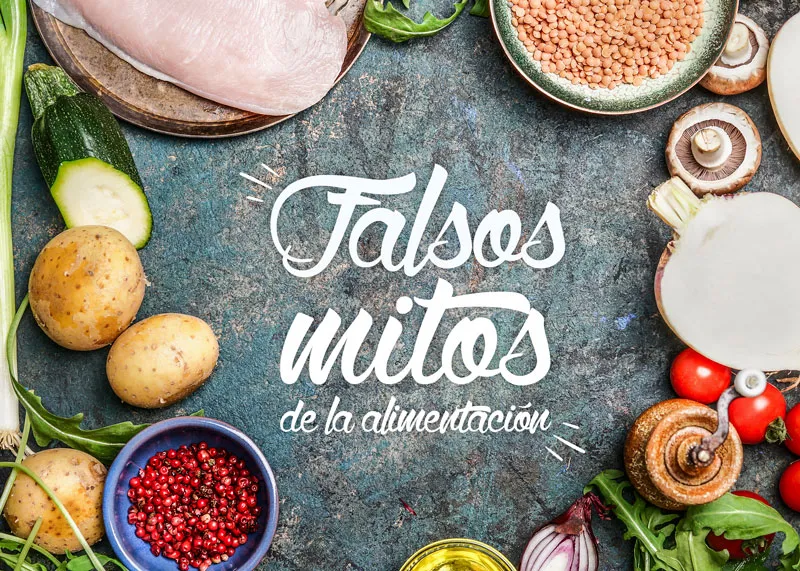The vast majority of people with diabetes are guided by food myths that, far from improving, worsen their illness, as noted from the Council and the Foundation of Dietitians-Nutritionists.
And, as Alma Palau, president of the General Council of Dietitians-Nutritionists (CGDN), says, while diabetics continue to believe that they can eat without problem what the industry sells them as 'light', which cannot eat certain certainfruits and vegetables or that alcohol intake is not pernicious for them, they will not improve their quality of life ”:
For Alma Palau, changing life habits and food education is essential to stop the increase in diabetes.
For the president of the CGDN “changing life habits and food education is essential” to stop the increase in diabetes that affects more than 5.3 million Spaniards, about 14% of the population.
And despite the fact that following a healthy lifestyle can prevent up to 70% of type 2 diabetes, for many years they have tried to combat diabetes only with medication and the follow -up of the patient's diet has been neglected.
“In Europe, health authorities have already realized that this pathology mustIn time, and even reverse some of the effects of this disease such as amputations, heart attacks or blindness, ”says Alma Palau.
In this sense, Andoni Lorenzo, president of the Federation of Spanish Diabetics (Fede), affirms that “Diabetes and Overpredo, in many cases, go hand in hand.Moreover, 1 in 6 adults in Spain are obese and 25% of children have over weight.With figures like these it is necessary to understand that the control of diabetes undoubtedly goes through a healthy diet that reduces the risk of complications in people with this ailment and avoids the diagnosis of new cases.It is important to bet on educating the patient in adequate and balanced eating habits, a formation in which you have to go hand in hand with dietists-nutritionists. ”
For all these reasons, from the Council and the Foundation of Dietists-Nutritionists, the #Cerodiabetes campaign has been launched, with which they want to demystify popular legends around food and help curb a disease that causes 5 million deathsEvery year worldwide.
Dietitians-nutritionists have carefully analyzed the main myths and errors that people with diabetes remain in their diets to try to unmask them.Giuseppe Russolillo, president of the Spanish Foundation of Dietists-Nutritionists (FEDN), says that “a product that comes with the 'light' label can contain levels of sugar not suitable for a diabetic, since despite having dropped the proportion ofSugar can remain too high.In addition, Light may be called because the percentage of another ingredient other than sugar has decreased. ”
Nor is the myth that people with diabetes cannot eat banana or grapes, since in reality you should eat all kinds of fruits whenever the proportion between carbohydrates consumed and the available levels of insulin is respected.The same goes for potato, pasta or rice, which are not prohibited and it is also recommended that carbohydrate intake will be performed from vegetables, tubers, fruits, whole grains or legumes above other sources of carbohydrates, especially those with fats, sugars and added sodium.
Another usual myth is to think that "while I take the pill for diabetes," I can eat whatever.Take care of foodIt can be a weapon as powerful as medication in the treatment of type 2 diabetes.
Giuseppe Russolillo also warns of food labeling, "because the tag‘ suitable for diabetics ’is not synonymous with the open bar," he says.Russolillo ensures that in many cases sugar is replaced by another caloric sweetener or an ingredient that may affect blood glucose.It also happens that there are foods that are effectively made with non -caloric sweeteners, but that their excessive intake leads to intestinal distress situations.
Another typical myth is to consider that honey is better than sugar, when in reality honey intake also involves free sugars with effects on glycemia similar to sugar.
The myth that saccharin is a product that can produce cancer is also widespread, but according to WHO, it is a safe additive whenever it is taken within the recommended limits, which are 5 mg per kg of body weight.
As Alma Palau affirms, the problem is that “you cannot give printed leaves with universal diets to diabetics, you have to teach them to feed, customize their diets, guide them, accompany them on their way to get a higher quality of life andthat do not develop the side effects of the disease, so painful for the patient. ”
Source: Link


